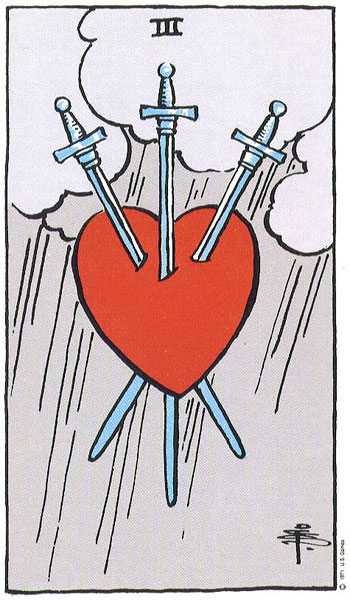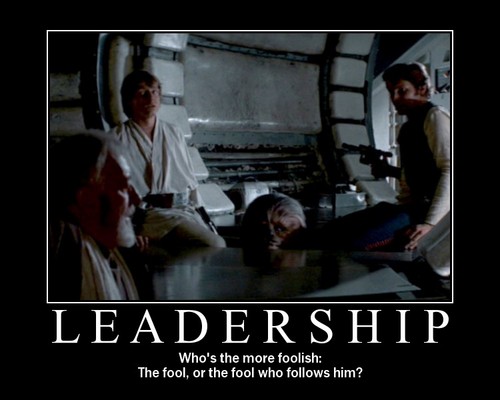Organizing people is hard. No matter the number of people, organization is the place where many otherwise noble endeavours fall down. I’ve had the privilege of being a part of and sometimes helping form and lead a goodly number of organizations of varying types, ranging from professional teams of 5-10 people all the way up to massive disconnected virtual teams of up to 100. They’ve all had their strengths and weaknesses, and some have fallen apart while others have come together to accomplish something awesome. Having an organization fall apart can be painful, and it’s worse when everyone involved (particularly those in charge) are trying to hold everything together. A group that works well can stay close for years or decades, and a group where everyone is invested but still winds up shredded can linger for a long time.
I’d like to talk a little bit about what I’ve learned while trying to bring people together to accomplish various goals. I’ve been reading a lot of management books as part of my studies, and they often talk about what it takes to be a successful leader. While I think that’s important, I think that the organization itself is more important than its leader, because if it can’t function without its leader it wasn’t a very solid organization to begin with.
In the various things I’ve read, there’s been a few recurring concepts that are touted as important things for a leader to develop. I think they make a good set of pillars for an organization as well, but I also think they’re double-edged swords. Everything requires moderation, and these ‘swords’ can help your organization cut through obstacles in its path or they can shred your group to pieces.
Here are the ‘swords’ that need to be wielded by successful organizations:
Communication
This is the first, most important thing. Everyone in the group needs to be able to communicate. The more open the communication, the better, to a point. Organizations with insufficient communication see drama, siloing, and inefficiencies borne of a lack of spread knowledge. We live in a world where a quick chat with someone should be a couple of keystrokes away, but we often fall into patterns of noncommunication for various reasons.
A healthy organization needs to be able to communicate, which is more than just status reports. Praise and criticism need to be available, and the most successful groups I’ve worked with are able to handle both. This isn’t something a leader can accomplish on their own; it requires that the group develop an atmosphere where speaking one’s mind, whether that’s to praise someone, provide constructive criticism, or ask for help is not just allowed but encouraged. Sometimes, this communication may need to be private or anonymous, but the the very best groups it doesn’t need to be, and either way it should exist.
Communication has a downside, though. There is a time to talk and a time to act, and any organization needs to know the difference. Planning is very important, but it’s vital not to get bogged down. One of my rules as a raid leader is that any explanation of any boss fight can last no longer than thirty seconds. I’ve (frequently) made exceptions to this, and they’ve always been mistakes. Often we face encounters that require more than thirty seconds of explanation, but this doesn’t change the rule. I’ll explain everything I can in thirty seconds, we’ll take a crack at it, fail, and move forward with another thirty seconds of explanation. More than that and people lose interest.
As the stakes get higher (in, say, a professional environment with money on the line), that threshold increases, but there’s still a limit to how much talking can occur before most people tune out. Agile development operates on a similar concept, with “sprints” being a small subset of a larger picture and covering that attention threshold. In the raid, we explain a bit, pull, wipe, then course correct. In Agile development, you plan a bit, execute for a few weeks, then come back, see what worked, then course correct. Same strategy, broader application.
Direction
This is almost as important as communication, and is kind of a “well, duh” concept. A group needs a task, a goal that it’s working towards. This can be as specific as “complete this assignment” or “defeat this boss” or it can be as vague as “make a place to call home” or “support each other through hard times”. A really solid group can be pointed in a direction and go, getting everything necessary done along the way.
An idea that I’ve found difficult to internalize is that a lot of times, simply telling people what to do is extremely effective. I’ve been a part of and even led a lot of groups that have fallen apart because the directing force is too weak. Sometimes it’s trying too hard to accommodate everyone’s schedules, or it’s overly worried about what everyone in the group wants to do, and winds up doing nothing. I personally spend a lot of time trying to work out what everyone in my groups wants if I’m leading them, and sometimes I just need to tell people what’s going on and let them figure out the details for themselves. The key to this is to respect and appreciate the people on your team, understanding that they’re often trying to make things work. A secret I’ve found out about myself, and that I suspect is true of others, is that when I’m told where to be, what to do, and when, and I have to change my plans to make that work, I’m a lot more invested in what happens, so I’m more into it.
The dark side of this is twofold. When direction is wielded as a weapon, it leads to micromanagement or closed communication. People in the organization should be capable of knowing what needs to be done and doing it without needing excessive oversight– if this isn’t the case, that’s what training is for. If direction is used to excessively shut out avenues of communication or topics raised, it closes communication lines. Obviously some suggestions, comments, and ideas won’t work or aren’t appropriate, but there’s a line between staying focused and clamping down that shouldn’t be crossed.
Motivation
Motivation is the last ‘sword’, and it’s the trickiest one. It’s important that everyone in the group is motivated, but it’s also important that the motivation is genuine and not forced. When I posted a few weeks ago about limiting my raid’s focus on a given encounter to two weeks at a time and no more (there’s that direction thing again), it was the result of a vibe I was getting that mirrored my own feelings. We weren’t making progress because we were all bored of the same thing, but we wanted to raid together and so were all forcing the motivation.
In the past few weeks, we’ve hit other targets, and beaten every single one. We’ve progressed through a ton of bosses that we’d never seen before, and when we returned to the original boss we’d been fighting, we instantly made progress into a portion of the fight we’d never really cracked open. I’m confident that we’ll have the boss down soon, just from the break and the breather we’ve had.
My motivation for the “two weeks” rule was partly selfish. I was getting bored of the same boss week after week, and at the time I wondered if I was misreading the vibe I was getting– projecting my lack of motivation onto everyone else. As the group’s leader, I’m not sure there’s a difference. Motivation in a group often trickles down from the leadership, and I think it’s significantly more important as a leader to motivate yourself than try to motivate your team when you aren’t fully invested yourself.
This can backfire on you– you need to be empathetic to your group’s needs and desires beyond your own– this much is obvious. Trying to force motivation is the more insidious trap, though. Every group needs to be motivated, but trying to force it feels shallow and will quickly make your team bitter, which undermines both your communication and your direction. Motivating people is often about being motivated yourself and letting that energy flow outwards, rather than trying to create it from nothing. In a good group, however, this can often become a positive feedback loop, which is ideal.
This is just scratching the surface of my take on managing an organization, but hopefully it was interesting for someone.






1 comment